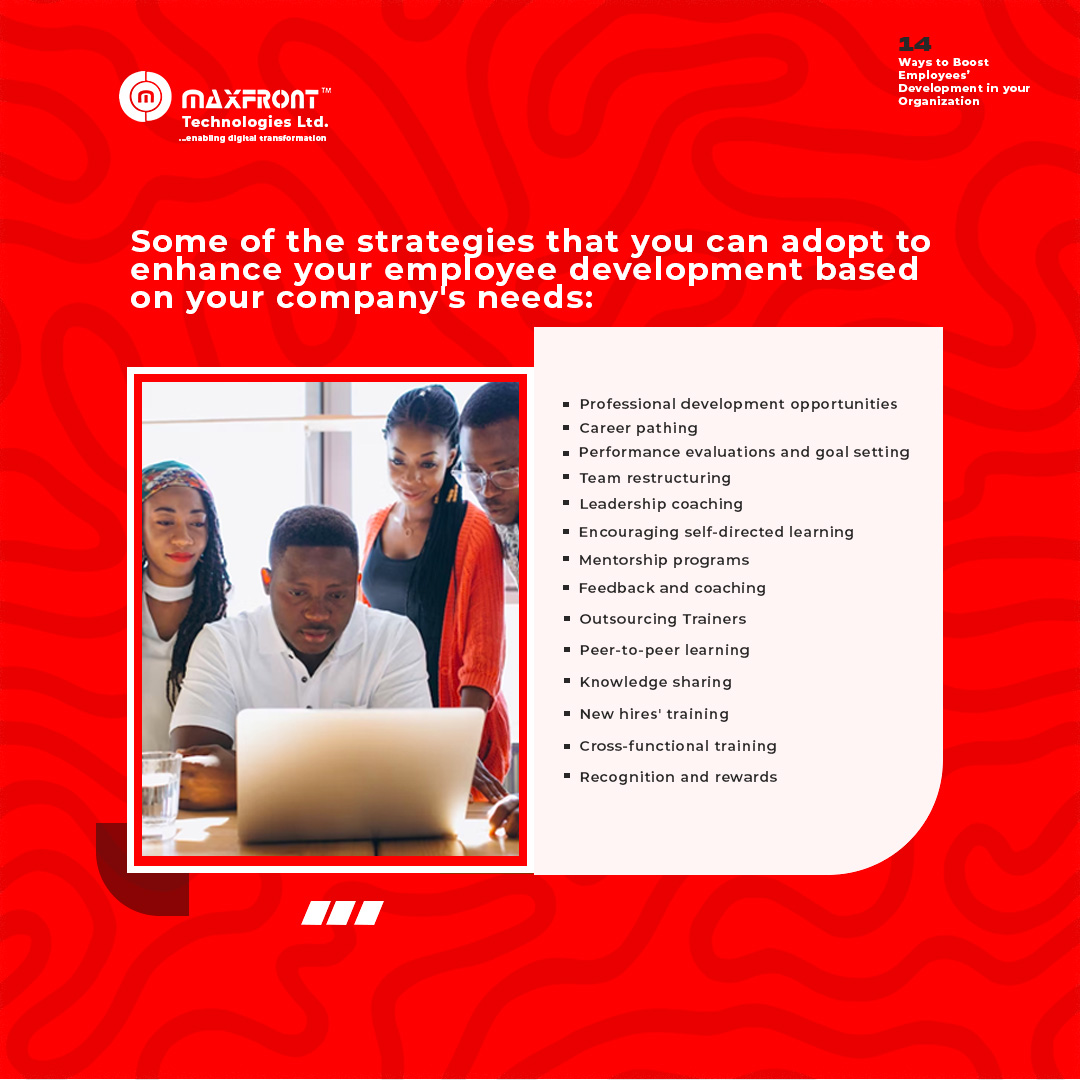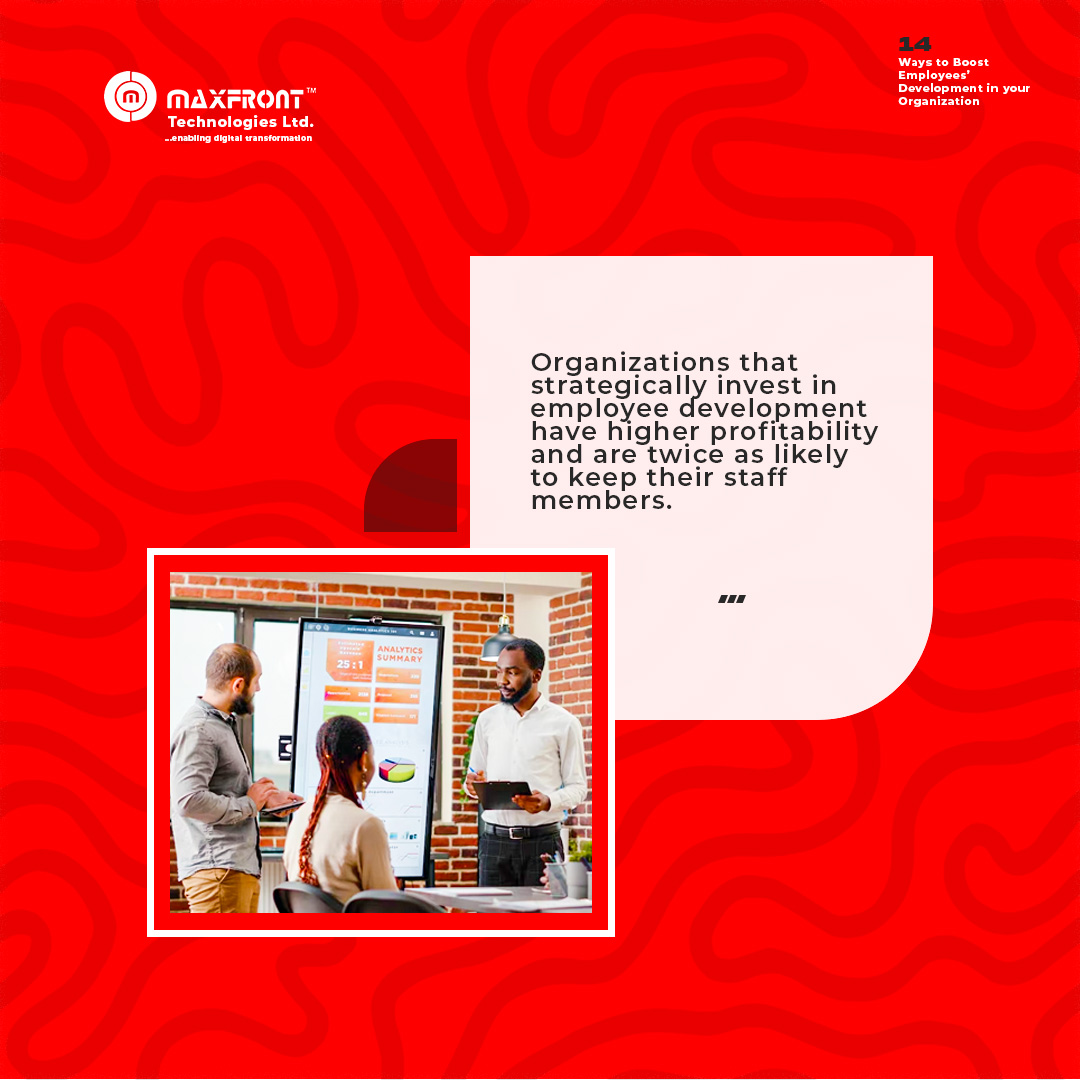Companies that can train their employees more effectively, even on a tight budget, will see the most significant long-term returns. As a CEO, make sure that your employees undergo retraining or upskilling. Organizations that strategically invest in employee development have higher profitability and are twice as likely to keep their staff members.
At the same time, many other companies ramp up hiring to match the demand for new talent. According to the World Economic Forum’s research on the future of work, employee development doesn’t have to be expensive and offers a high return on investment. Employees must be able to learn continuously and grow more adaptable to changes, so learning must be embedded in business culture.
These are some of the strategies that you can adopt to enhance your employee development based on your company’s needs:

1) Professional development opportunities
Employers must train and retrain workers to develop soft skills such as innovation, leadership, and emotional intelligence. Offer employees opportunities for growth through workshops, courses, conferences, or online training programs.
2) Career pathing
Work with employees to define their career goals and provide a clear path for development and advancement.
3) Performance evaluations and goal setting
Regularly evaluate employees’ performance and set achievable and specific goals to help them grow in their roles.
4) Team restructuring
Your organization might have teams with members scattered in different locations, especially with the rise in remote work and freelancing positions, hence the need to shift to multidisciplinary teams to match costs and skills requirements.
5) Leadership coaching
Leadership coaching focuses on bringing out the best in employees, helping them identify weak areas and supporting their progress. It expands the scope of a manager’s focus to concentrate on the individuals making up the team, helping them grow smartly along with the team. Leaders must provide technical and emotional support to employees.
6) Encouraging self-directed learning
Provide resources, time, and support for employees to pursue their learning interests and development.
7) Mentorship programs
Match experienced employees with less experienced ones to provide guidance and support.
8) Feedback and coaching
Encourage open and frequent feedback and provide coaching to help employees improve and grow.
9) Outsourcing Trainers
Companies should consider hiring contractors to provide on-demand training and development, with retired employees acting as mentors or consultants
10) Peer-to-peer learning
Companies must develop hands-on and experiential training activities to promote peer-to-peer knowledge sharing and coaching to bridge the generation gap.
11) Knowledge sharing
Companies must develop methods to ensure best practices and lessons are shared and continuously updated to ensure customer satisfaction.
12) New hires’ training
Companies must improve remote hiring and onboarding processes to upskill and hire new talents.
13) Cross-functional training
Provide opportunities for employees to work on projects outside their traditional roles to develop new skills and perspectives.
14) Recognition and rewards
Recognize and reward employees for their achievements, skills, and contributions to the organization.

There is no ideal solution, but creating a blended learning strategy is the most successful. Employee skills are a competitive advantage for any firm in the technology age. Businesses that want to succeed in the new standard must prioritize investing in training and development.